Container Desinfektion nach Europa-Norm DIN EN 17272
Die standardisierte, sichere und validierbare Wasserstoffperoxid Container Dekontamination nach Stand der Technik!
Hintergrund: Validierbare Container-Aufbereitung mit reproduzierbarer Desinfektionsqualität
Wir schützen Ihre wertvollen Container samt Containerfracht vor gefährlichen Krankheitserregern nach aktuellem Stand der Desinfektionstechnik - und das mit einer schnellen Einwirkzeit von nur 60 Minuten!
Seefracht-Container und generell alle Arten von Logistik-Containern, welche täglich rund um den Globus verschifft werden, sind von Natur aus einer mehr oder weniger starken Umgebungs- und Oberflächenkontamination durch biologische Arbeitsstoffe ausgesetzt. Dementsprechend anspruchsvoll und aufwändig gestalten sich desinfizierende Aufbereitungsprozesse von solchen Containern. Schließlich sollen Menschen, Tiere und Produkte, die in Berührung mit diesen Containern kommen, bestmöglich hygienisch abgesichert werden - insbesondere im globalen Zeitalter von Pandemien, Seuchen, Krankheiten & Co..
Unsere Frage daher: Kennen Sie bereits die nach Europäischem Desinfektionsstandard DIN EN 17272 bestätigte DIOP-Desinfektionsmethode für Ihre anspruchsvollen Containerbegasungen / Containervernebelungen gegen Bakterien, Pilze, Viren und Sporen?
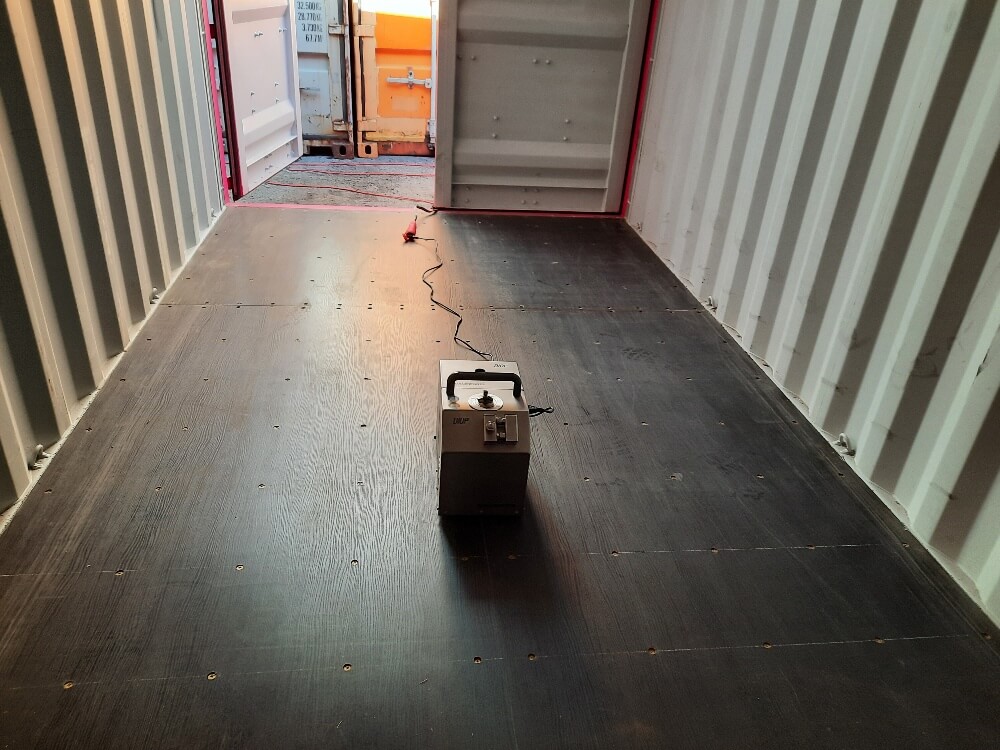
Ein echter Meilenstein für Ihre Containerdekontamination, Ihr Container-Hygienemanagement sowie Ihre automatisierte validierte Container Desinfektion
Um Ihrem Containerhafen und Containerterminal bei der steigenden Anzahl von Desinfektionsverfahren und Systemen für die automatisierte Raum-, -Luft- und Oberflächendesinfektion durch eine Vereinheitlichung mehr Sicherheit zu geben, hat die EU Mitte 2020 die neue Vorgabe der DIN EN 17272 als neuen Stand der Technik verabschiedet. Im Bereich der validierbaren Schlussdesinfektionen wird dies auch bei der lückenlosen Aufbereitung von Schiffscontainern eingesetzt.
Stellen Sie als Desinfektor oder Hygieneverantwortlicher in Ihrem Container-Terminal und Hafen sicher, dass Sie Ihre herkömmlichen, manuellen Desinfektionsmethoden durch standardisierte Desinfektionsverfahren mit reproduzierbarer Desinfektionsqualität absichern.
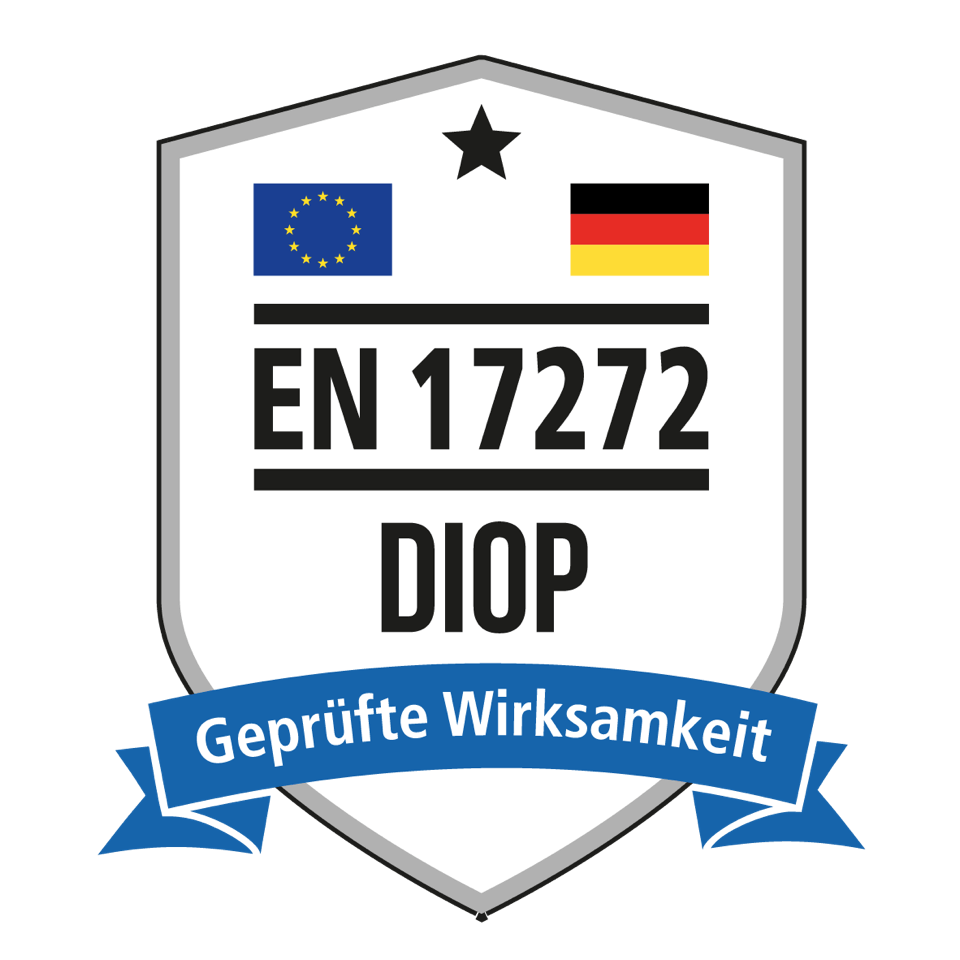
Wichtig für die automatisierte Aufbereitung von Containern nach Europäischem Desinfektionsstandard
Durch ein nach europäischen Normen geprüftes und standardisiertes Desinfektionsverfahren (EN 17272) haben Sie mikrobiologisch, technisch sowie rechtlich die Möglichkeit, automatisierte, validierte High-Level-Desinfektionen in allen kritischen Umgebungen inklusive Containern, Gefahrgut-Containern, und sogar Fahrzeugen durchzuführen.
3 auf Ihre Containerhygiene und Containersicherheit zugeschnittene Desinfektionslösungen
1. Mobile, tragbare Multifunktions-Vernebelungsgeräte für Ihre lückenlose Container Desinfektion
Automatisierte und validierbare Schlussdesinfektion für Ihr Container-Management durch reproduzierbare Desinfektionsqualität
Herkömmliche Flächendesinfektionsmethoden in Container-Umgebungen (z.B. die mechanische Scheuer-Wisch-Desinfektion oder Sprühdesinfektionen) sind eingeschränkt wirksam, da sie sich darauf verlassen, dass der Bediener die richtige Oberflächenauswahl, Produktvorbereitung und Kontaktzeit des Desinfektionsmittels sicherstellt. Roll-oder tragbare „No-Touch“-Raumdesinfektionsautomaten (H2O2 Aerosolgeneratoren) hingegen reduzieren die Abhängigkeit vom Bedienpersonal und können somit die Wirksamkeit der Schlussdesinfektion von Containern und Transportfahrzeugen aller Arten deutlich verbessern.
Darüber hinaus gleichen Sie die Defizite nicht-validierbarer, manueller Reinigungs- und Desinfektionsprozesse aus (Risikominimierung durch mikrobiologische Container-Validation).
Bei einer solchen Schlussdesinfektion muss jeder Quadratzentimeter eines Containers desinfiziert werden. Dies geschieht oftmals nicht und es kommt zu Defiziten, die die automatisierte Verneblung nach DIN EN 17272 ausgleicht.
Welche Containertypen können Sie sie bequem aufbereiten lassen?
- Schiffscontainer / ISO Container für Seefracht (Seefracht-Container)
- Kühlcontainer (Reefer) / Integralcontainer
- Laborcontainer
- Lagercontainer
- Bürocontainer
- Sanitärcontainer mit Duschen, Toiletten, Urinalen etc.
- High-Cube-Container (HC)
- Containersysteme für Militär, Feuerwehren und der Katastrophenschutz
- Schüttgutcontainer, Vielzweckcontainer, Plattform-Container u.v.m.
Enthaltener Leistungsumfang für Ihren Hafen bzw. Ihre Containerhafen-Terminal
- Ihr DiosolGenerator Modell zur automatisierten Container Dekontamination: MF Professional
- Starterpaket für H2O2 Generator inkl. Diosol-Biozid, Chemoindikatoren, Multifunktionszubehör etc.
- Einweisungsschulung in Ihrem Hafenterminal vor Ort
- Zertifizierung durch Staatlich geprüften Desinfektor
- DIN EN 17272 Desinfektionszertifikat samt Validierungsunterlagen, mikrobiologischer Gutachten sowie Mustervorlagen für Betriebsanweisungen, SOP's u.v.m.
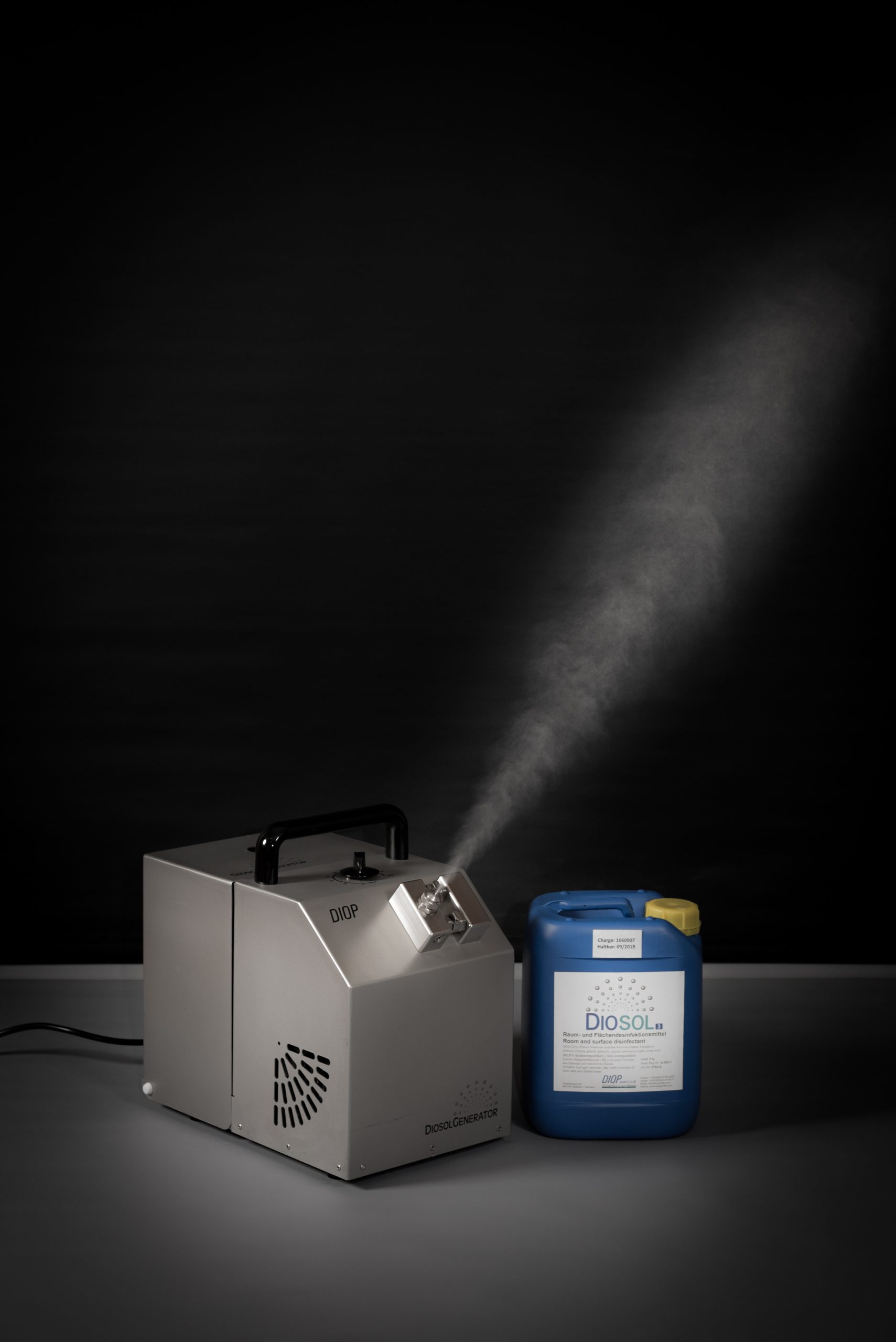
Die stressfreie Lösung für Ihre lückenlose und validierte Aufbereitung von Schiffscontainern nach aktuellem Stand der Desinfektionstechnik
2. Mobile rollbare Multifunktions-Desinfektionssysteme für Ihre H2O2 Container Dekontamination
Automatisierte und validierbare Schlussdesinfektion für Räume aller Arten, Größen und Komplexitäten durch reproduzierbare Desinfektionsqualität
Ebenso wie bei der anspruchsvollen Fahrzeugaufbereitung sind auch in Räumen alle Gegenstände, die von vielen unterschiedlichen Personen berührt werden, potenziell mit allen Arten von Erregern belastet (z.B. Noro- und Coronaviren, Mykobakterien / Tuberkulose-Erreger, multiresistente Bakterien, Schimmelpilze, Clostridien-Sporen etc.).
Im Gegensatz zu manuellen Desinfektionsarbeiten oder der physikalischen Entkeimung mit UV-Licht ebenso wie gefährlicher Ozonisierung, erreichen Sie mittels umgebungsschonender Wasserstoffperoxid-Kaltvernebelung außerdem Ecken, Kanten, Ritzen und Winkel, an die Sie mit Desinfektionstüchern nur mühsam sowie zeitraubend gelangen.
Gerade in verwinkelten Räumen mit technischen Einbauten oder auch in Ihren Einsatzfahrzeugen befinden sich eine große Zahl von Schaltern, die nicht aus Versehen verstellt werden dürfen. Mittels lückenloser H2O2 Vernebelung werden diese belasteten und vernachlässigten Zonen berührungsfrei und sicher desinfiziert.
Enthaltener Leistungsumfang
- Ihr DiosolGenerator Modell zur mobilen Container-Aufbereitung: PROTEC TUBE+
- Starterpaket für H2O2 Generator inkl. Diosol-Biozid, Chemoindikatoren, Multifunktionszubehör etc.
- Einweisungsschulung in Ihrem Hafenterminal vor Ort
- Zertifizierung durch Staatlich geprüften Desinfektor
- DIN EN 17272 Hygienezertifikat mit allen wichtigen Unterlagen und Dokumenten für Ihren Hygiene- und Desinfektionsplan
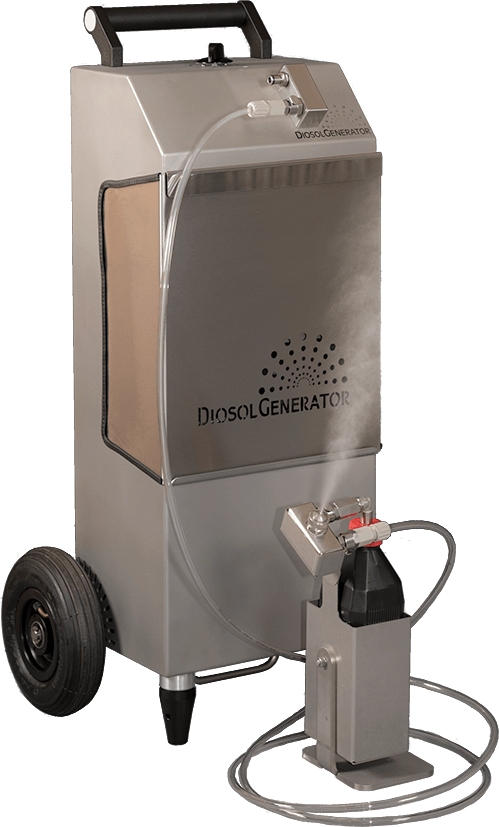
Die sorgenfreie Hygiene-Lösung für Ihre großflächige Umgebungsdesinfektion und Fahrzeugaufbereitung nach Europäischer Desinfektionsnorm
3. Professionelle Containerhygiene-Dienstleistungen durch Staatlich geprüfte Desinfektoren
Maßgeschneiderte H2O2 Container Desinfektionsprozesse für jede noch so gefährliche und komplexe Anforderung
Die DIOP GmbH & Co. KG ist seit mehr als 15 Jahren auf die Beratung, Analyse und Durchführung anspruchsvoller Desinfektionsprozesse in den Bereichen "Container-Aufbereitung und Schiffsdesinfektion" spezialisiert. Dadurch erleichtern wir das Leben unserer Kunden, indem wir ihnen mikrobiologische und rechtliche Sicherheit garantieren (Arbeitssicherheit für Anwender bei geringem Chemieeinsatz gemäß Biostoff-Verordnung).
Vorteile für Sie: Unser Desinfektionsservice für Container-Terminals von A bis Z
- Individuelle Angebotskalkulation basierend auf Ihren konkreten, mikrobiologischen Hygiene-Anforderungen
- Bei Bedarf gemeinsame Vorab-Begehung (z.B. vor jährlicher Validierung, Inbetriebnahme von Fahrzeugen, Gebäudekomplexen und Räumen, nach Bauendreinigungen, im Ausbruchsmanagement, in Pandemie-Situationen sowie bei Notfallwiederherstellungsplan oder generell Notfallmaßnahmen)
- Detaillierte Aufzeichnung und Protokollierung der Desinfektionsmaßnahme mit moderner H2O2 Messtechnik und Wasserstoffperoxid Sensorik
- Durchführung der Dekontaminationsarbeiten ausschließlich durch erfahrene Staatlich geprüfte Desinfektoren und Hygiene-Sachverständige
- 6 log Validierung mittels geschlossener Bioindikatoren und Laborauswertung (bei Bedarf sogar Begleitung durch externen Hygieniker möglich)
- Freimessung von Desinfektionsmaßnahmen
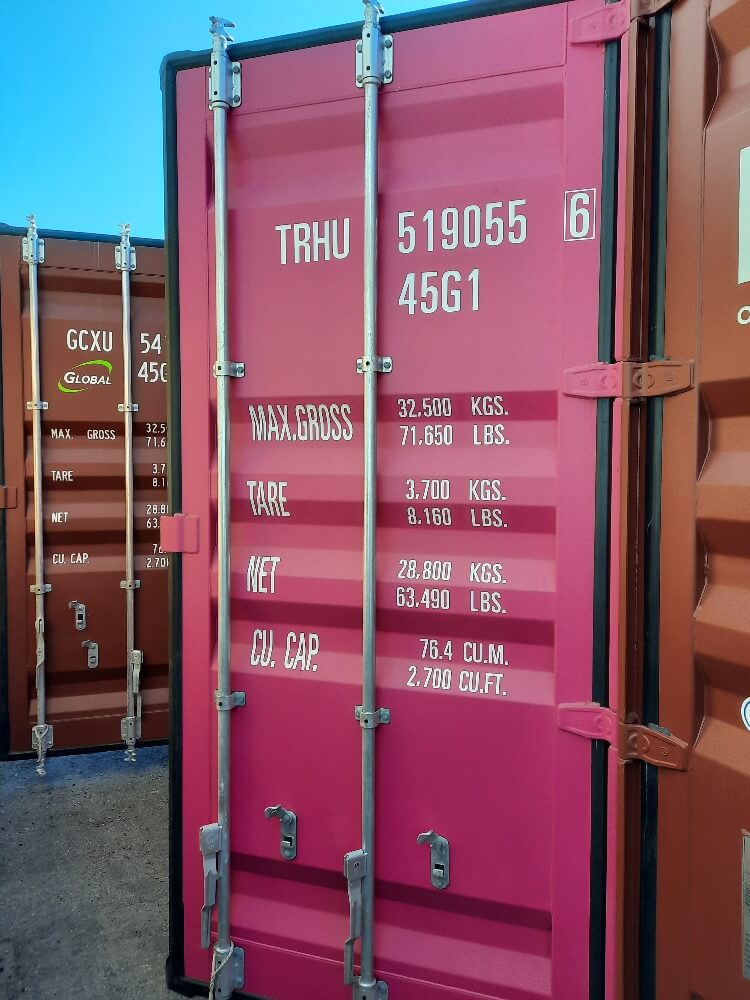
Die stressfreie Lösung für aufwändige Desinfektionen von Schiffscontainern
Aus den Bereichen maritime Hygiene, Schädlingsbekämpfung und Container Dekontamination bekannt aus
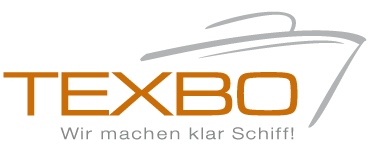
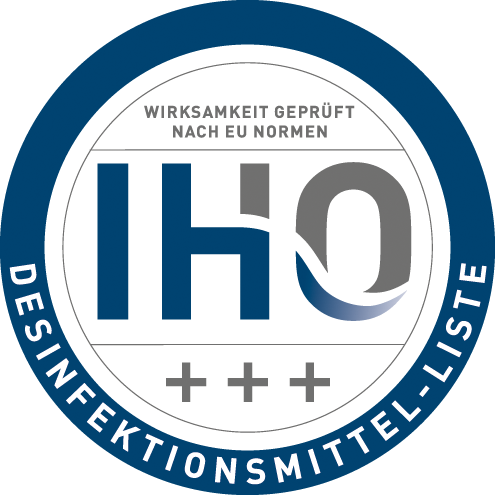
Die Vorteile für Ihr Hygiene- und Qualitätsmanagement
Automatisierte Desinfektionsprozesse nach aktuellem Stand der Technik (DIN EN 17272) steigern die Effizienz Ihrer Containerdesinfektion signifikant. Defizite bedingt durch manuelle Reinigungs- und Flächendesinfektionsvorgänge werden sicher ausgeglichen.
Professionelle und seriöse Hygiene-, Infektionspräventions- und Desinfektionsmaßnahmen werden heute durch maßgebliche Europäische Normen geregelt. Anhand der DIN EN 17272 sichern wir Ihnen Ihre automatisierten Container-Desinfektionsprozesse rechtlich ab. Sie sind hier 100% auf der sicheren Seite.
Lückenlose und groß-angelegte Flächendesinfektionen sind naturgemäß nicht durch Scheuer-Wisch-Desinfektionen, UV-C Entkeimung oder Ozonisierung möglich. Abschließende H2O2 Kaltvernebelungen ohne zusätzliche Manpower garantieren Ihnen hingegen enorme Zeit- sowie Kosteneinsparungen, wenn Sie die erreichte Qualität und den Aufwand in Relation zueinander setzen.
Jeder Anwender in Ihrem Container- und Hafen-Terminal erhält eine auf Ihre Bedürfnisse maßgeschneiderte DIN EN 17272 zertifizierte Inhouse-Einweisungsschulung durch unsere erfahrenen Staatlich geprüften Desinfektoren.
Die Themen "Prozess- und Arbeitssicherheit" sowie "Unfallverhütungsvorschriften" spielen bei der desinfizierenden Aufbereitung von Containern eine tragende Rolle. Profitieren Sie daher auch im Bereich der Flächendesinfektion von unserem auf dem Prinzip der Risikominimierung basierenden Desinfektionsverfahren.
Namhafte Dienstleister, Container-Schiffe sowie Reedereien nutzen die H2O2 Kaltnebel Desinfektion von DIOP bereits erfolgreich seit vielen Jahren. Nutzen auch Sie die standardisierte und validierte Wasserstoffperoxid Kaltvernebelung von DIOP.
H2O2 Container-Vernebelungen im direkten Verfahrensvergleich
Kann die automatisierte Kaltvernebelung nach EN 17272 von Containern und Containerschiffen zielführend und gegenüber anderen Verfahren / Wirkstoffen / Desinfektionstechnologien optimal im Arbeitssicherheits-Konzept eines Containerhafens eingesetzt werden und was sind die Vorteile eines solchen luftübertragenen Desinfektionsverfahrens zur Containeraufbereitung ("Aerogene Desinfektion", "Airborne Disinfection Method")?
Vorteile im Vergleich zu anderen Wirkstoffen und Verfahren im Bereich der Container-Desinfektionsmaßnahmen:
-
uv-C containerDesinfektion
-
vernebelung natriumhypochlorit
-
Ozon container desinfektion
H2O2 Raumbegasung versus H2O2 Kaltvernebelung
Vorteile der Wasserstoffperoxid Vernebelung im Vergleich zur Wasserstoffperoxid Raumbegasung (gasförmiges Wasserstoffperoxid):
Verfahrenskriterien | Wasserstoffperoxid Kalt-vernebelung (aHP-Verfahren) | Wasserstoffperoxid Raumbegasung |
|---|---|---|
Validierbar nach DIN EN 17272 | ||
Bakterien (grampositiv/-negativ) | ||
Pilze | ||
Myko-bakterien | ||
Behüllte Viren | ||
Unbehüllte Viren | ||
Sporen | ||
Toxikologie | ||
Kein hoher Eiweißfehler | ||
Geringe bis keine Korrosion | ||
Nachteile | Keine Nachteile bekannt bei Micro-Aerosol-Technologie |
|
Mikrobiologisch geprüft u.a. durch
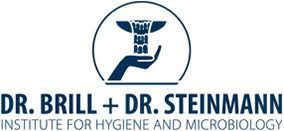

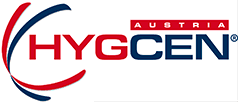
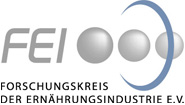

Was Hygieneexperten und Anwender sagen

pd dr. andreas schwarzkopf
Facharzt für Mikrobiologie und Infektionsepidemiologie
Im Bereich der Flächendesinfektion im Gesundheitswesen sind Kaltverneblungsverfahren für Wasserstoffperoxid bereits seit vielen Jahren im Einsatz. Diese Art der Desinfektion lässt sich ohne Probleme in Ihren Hygiene- und Desinfektionsplan integrieren.
Maximilian p.
Anticimex GmbH & Co. KG
Wir sind sehr zufrieden mit den MF Professional Kaltverneblern!
Lassen Sie sich jetzt
kostenfrei und unverbindlich beraten!
Unser Team bestehend aus Staatlich geprüften Desinfektoren freut sich auf die Anfrage Ihres Containerhafens oder Containerterminals.
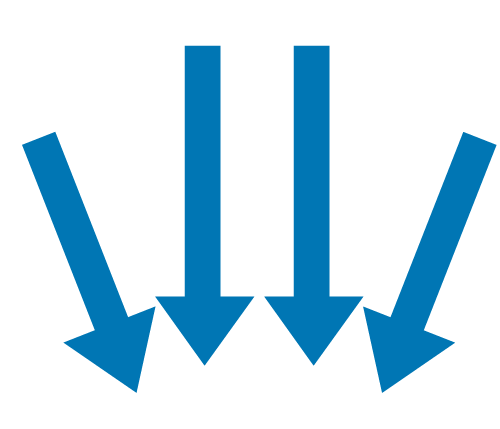
Häufig gestellte Fragen (FAQ) zur Dekontamination von Containern und Schiffscontainern aller Arten und Größen:
Eine im MDPI Verlag erschienene Publikation des Fachmediums “viruses” Ausgabe 13 in 2021 bringt den Mehrwert automatisierter Desinfektionsverfahren gemäß EN 17272 Verfahren in diesem Kontext wie folgt auf den Punkt:
Herkömmliche Desinfektionsmethoden sind eingeschränkt, da sie sich darauf verlassen, dass der Bediener die richtige Oberflächenauswahl, Produktvorbereitung und Kontaktzeit des Desinfektionsmittels sicherstellt. „No-Touch“-Raumdesinfektionsautomaten reduzieren die Abhängigkeit vom Bedienpersonal und können somit die Wirksamkeit der Schlussdesinfektion verbessern [36]. Suspensionstests für chemische Desinfektionsmittel sind für die automatisierte Bewertung luftgetragener Raumdesinfektionen nicht geeignet [37].
Bisher konnten solche Systeme nur auf Basis der nationalen französischen Norm NF T 72-281 (2014) [38] getestet werden. Im April 2020 veröffentlichte das Europäische Komitee für Normung jedoch die Norm EN 17272:2020 zur Bewertung der luftgetragenen Raumdesinfektion durch ein automatisiertes Verfahren (einschließlich der Bestimmung von bakteriziden, mykobakteriziden,sporizide, fungizide, levurozide, viruzide und phagozide Wirkung) [39]. Die empfohlenen Testviren für den medizinischen Bereich sind das Adenovirus und das MNV [39].
Nein, bei sachkundiger Anwendung unseres EN-zertifizierten Desinfektionsverfahrens kann es zu keinerlei Schäden von Oberflächen, Verpackungsmaterialien, Kartons, Container-Equipment, Frachtgut, textilen Stoffen, sensiblen Elektroniken (sogar kompatibel mit Mainboards, Platinen und Micro-Chips) oder teuren Medizingeräten kommen. Der mehr als 12-jährige Einsatz auf nationaler sowie internationaler Ebene in mehr als 30 Zielgruppen bestätigt dies eindrucksvoll. Darüber hinaus bietet DIOP eine Garantie zwecks Elektronik- und Materialverträglichkeit an. Sprechen Sie unsere Staatlich-geprüften Desinfektoren dazu gerne jederzeit an. Eine Liste mit erfolgreich-geprüften Materialien, Rohstoffen und Elektronikgeräten erhalten Sie gerne auf Anfrage.
Der komplette Dekontaminationsprozess mittels Kaltvernebelung vom Beginn der Container-Desinfektionsmaßnahme bis zum Wiederbetreten Ihres betreffenden Containers dauert je nach Vor-Ort-Gegebenheiten nur zwischen ca. 105 und max. 135 Minuten (davon 60 Minuten mikrobiologische Einwirkzeit). Damit ist unsere H2O2-Vernebelungstechnologie eine der schnellsten am Markt für automatisierte Desinfektionsverfahren nach EN 17272.
Im Rahmen der Aufbereitung von Containern ist die Umsetzung der Desinfektionsmaßnahme sogar noch schneller, da Schiffscontainer direkt nach der 60-minütigen Einwirkzeit schnell und ausreichend über die großen Container-Türen stoßgelüftet werden können. Dadurch können Sie Ihre Seefrachtcontainer - je nach Diosol-Konzentration - schon wieder nach etwa 65 bis 75 Minuten ohne Schutzmaske und Schutzkleidung in Gebrauch nehmen.
Da das Vernebelungsverfahren auch bei der maschinellen Aufbereitung von Medizinprodukten wie dem Inneren von Rettungswagen, Inkubatoren, Intensivstationen etc. seit vielen Jahren eingesetzt wird, ist die gute Materialverträglichkeit erwiesen und etabliert.
Die Validierung können Sie selbst bequem über mikrobiologische Bioindikatoren durchführen. Vor der Dekontamination legen Sie die biologischen Indikatoren an die zu überprüfenden Stellen aus und sammeln diese nach Abschluss der Maßnahme wieder ein. Zusammen mit dem Dokumentationsblatt senden Sie das Validierungspäckchen einfach an das zuständige mikrobiologische Labor zur Auswertung. Nach etwa 7 bis 10 Werktagen erhalten Sie das Validierungsergebnis. Baugleiche oder bauähnliche Container müssen nicht allesamt separat validiert werden, sondern Sie wählen einfach einen Referenz-Container pro Baugruppe / Container-Modell aus und sparen dadurch hohe Validierungskosten.
Ja, neben der maßgeblichen Europanorm EN 17272:2020 für automatisierte Desinfektionsverfahren erfüllen wir auch Dutzende andere EN-Normen der Flächendesinfektion. Ebenfalls im Einklang steht das Dekontaminationsverfahren mit den verbindlichen Vorgaben der Biostoff-Verordnung und der Gefahrstoff-Verordnung mit den jeweils dazugehörigen technischen Regeln (TRBA/TRGS) sowie der KRINKO-Empfehlung „Anforderung der Hygiene an die Reinigung und Desinfektion von Flächen“.
Selbstverständlich auch im Rahmen der Container-Desinfektionsprozesse ja. Jede Desinfektionsmaßnahme kann problemlos und anwenderfreundlich Container-bezogen validiert werden. Dazu können Sie unsere geschlossenen DioSpore-Controller Bioindikatoren (BI), aber auch standardisierte Bioindikatoren mit sporizider Beladung verwenden (6 log Geobacillus stearothermophilus oder Geobacillus subtilis). Verwenden Sie dazu unsere Desinfektionssysteme in Kombination mit Diosol 12 oder Diosol 19 (= speziell-stabilisiertes 19% Wasserstoffperoxid-Biozid).
Die Validierung gilt als bestanden, wenn ein Reduktionsfaktor bei Geobacillus stearothermophilus > 6 (SAL)
erreicht wird und bei RODAC-Platten im Vorher-Nachher-Vergleich mindestens 99 % Unterschied
bestehen (Keimreduktion).
Selbstverständlich ist eine Reinigung / Vorreinigung vor der Vernebelung sinnvoll und erforderlich, weil eben sichtbare Verschmutzungen auf Oberflächen mechanisch beseitigt werden müssen. Der Wirkungsgrad anschließender Desinfektionsmaßnahmen jedoch liegt laut Deutscher Gesellschaft für Krankenhaushygiene (DGKH) bei max. 70%. In Containern bedingt durch die Vielzahl und Komplexität an Oberflächen liegt die Erreichbarkeit sowie Wirkung manueller Maßnahmen sicher noch deutlich niedriger. Es existiert also eine gefährliche und unnötige Hygiene- und Desinfektionslücke von > 30% plus die bereits wischdesinfizierten Flächen, die mit nicht ausreichender Desinfektionswirkung behandelt wurden. Insbesondere bei 3-MRGN oder 4-MRGN sowie Viren sind großflächige Desinfektionsmaßnahmen erforderlich.
Einer der größten Nachteile manueller Desinfektionsabläufe ist allerdings die Tatsache, dass sie NICHT VALIDIERBAR sind und daher die Desinfektionsqualität von Prozess zu Prozess stark variiert (da abhängig von der Leistungsfähigkeit des Nutzers).
Ebenso wenig kann die Anforderung an die Reinigung und Schlussdesinfektion von Oberflächen nicht annähernd lückenlos durch manuelle Wischdesinfektionen erfüllt werden:
"Durch die Desinfektion soll der Bereich/Container/Raum/Fahrzeug so hergerichtet werden, dass er ohne Infektionsgefährdung zum Transport genutzt werden kann. Die Schlussdesinfektion erstreckt sich je nach potentieller Kontamination mit Krankheitserregern auf alle erreichbaren Oberflächen und Gegenstände, die mit den Krankheitserregern kontaminiert sind bzw. sein können."
Die aerogene Kaltnebel Desinfektion von DIOP wurde bis dato erfolgreich zwischen 4 und 45 °C geprüft. Zahlreiche Container verweilen jedoch je nach geographischem Standort, Jahreszeit und Außentemperatur häufig bei eisigen Temperaturen unter 0 °C. Was können Sie also tun, um eine wirksame Containerdesinfektion sicher zu stellen?
Ganz einfach: Heizen bzw. wärmen Sie den Container über ein mobiles Heizgerät entsprechend auf mind. 4 Grad Celsius auf. Dann sind Sie in Sachen mikrobiologischer Performance auf der sicheren Seite. Sollte der Container derart kalt sein, dass er temperaturbedingt eine Kältebrücke darstellt, so können Sie den Vernebelungsprozess zeitgleich mit dem Aufwärmprozess kombinieren.
Andernfalls kann es zu unnötigen Kondensationseffekten im betreffenden Container kommen.
